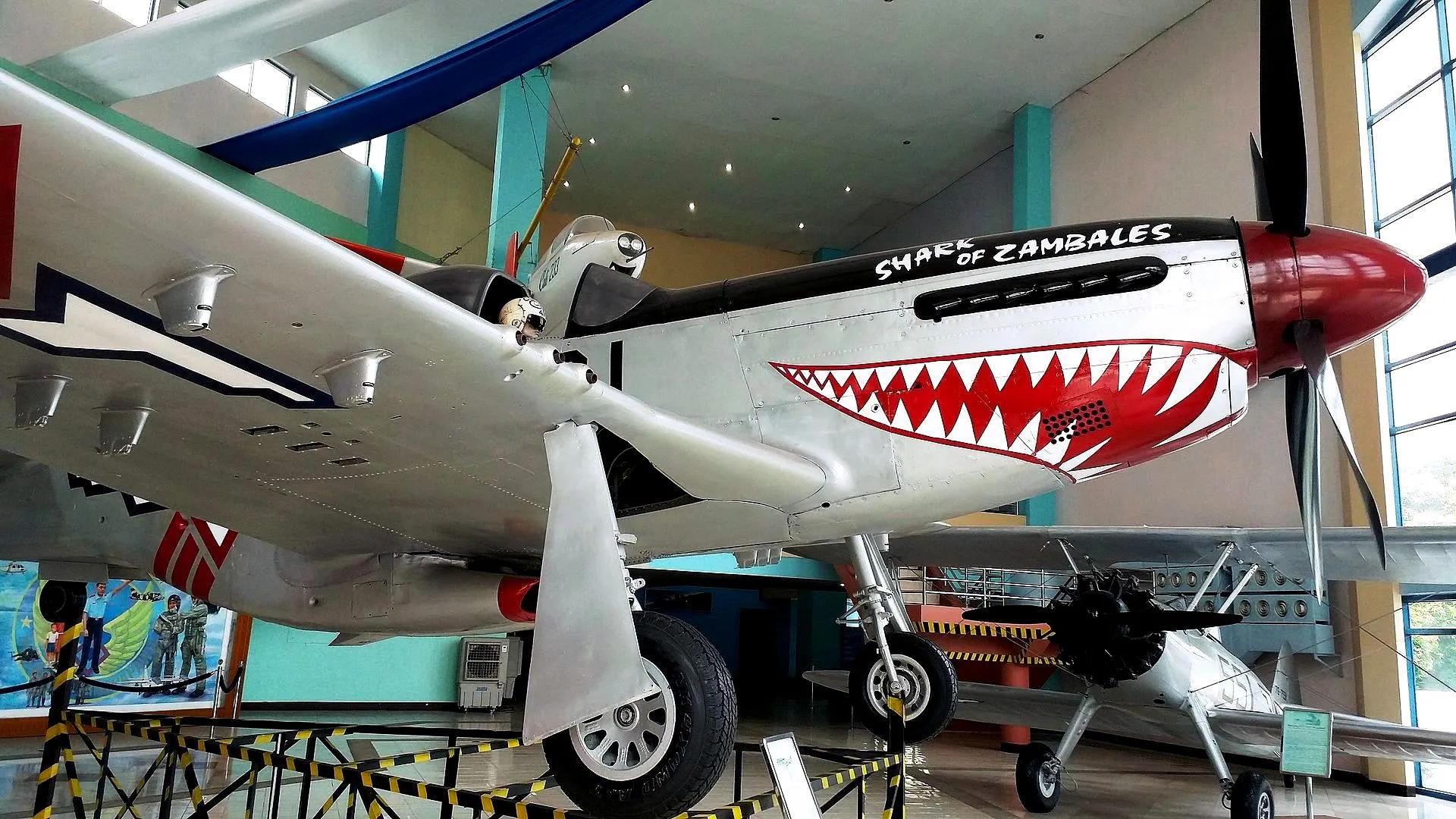Philippines: Warplanes of the Second World War preserved
Warplanes of the Second World War preserved in the Philippines
The aim of this website is to locate, identify and document Warplanes from the Second World War preserved in the Philippines. Many contributors have assisted in the hunt for these aircraft to provide and update the data on this website. Photos are as credited. Any errors found here are by the author, and any additions, corrections or amendments to this list of Warplane Survivors of the Second World War in the Philippines would be most welcome and may be e-mailed to the author at hskaarup@rogers.com.
Mga Warplane ng Ikalawang Digmaang Pandaigdig na napanatili sa Pilipinas
Ang layunin ng website na ito ay upang hanapin, kilalanin at dokumento ang mga Warplanes mula sa Ikalawang Digmaang Pandaigdig na napanatili sa Pilipinas. Maraming mga nag-aambag ang tumulong sa pangangaso para sa mga sasakyang panghimpapawid na magbigay at mai-update ang data sa website na ito. Ang mga larawan ay bilang kredito. Ang anumang mga pagkakamali na natagpuan dito ay sa pamamagitan ng may-akda, at anumang mga pagdaragdag, pagwawasto o pagbabago sa listahang ito ng Warplane Survivors ng Ikalawang Digmaang Pandaigdig sa Pilipinas ay magiging maligayang pagdating at maaaring i-mail sa may-akda sa hskaarup@rogers.com.
Philippines (Second Philippine Republic)
The Commonwealth of the Philippines was invaded by the Empire of Japan in December 1941 shortly after Japan’s declaration of war upon the United States of America, which controlled the Philippines at the time and possessed important military bases there. The Philippine Army Air Corps engaged the Japanese on their invasion of the Philippines in 1941-1942. Many of the officers of the Philippine Army and Philippine Army Air Corps came from the members of the Philippine Constabulary and Air Constabulary. Most of their aircraft were withdrawn after the combined American-Filipino army was defeated by April 1942. Guerrilla resistance against the Japanese continued throughout the war. Filipino army units that had not been captured as well as a communist insurgency and supporting American agents all played a role in the resistance. Due to the huge number of islands, the Japanese did not occupy them all. Japanese control over the countryside and smaller towns was often tenuous at best. Allied forces liberated the islands from Japanese control in 1944, in a naval invasion.
The Second Philippine Republic, officially known as the Republic of the Philippines (Tagalog: Repúbliká ng Pilipinas), was a state in the Philippines established on 14 October 1943 under Japanese occupation. President Manuel L. Quezon declared Manila, the capital, an “open city” and left it under the rule of Jorge B. Vargas, as mayor. The Japanese entered the city on 2 January 1942 and established it as the capital. Japan fully captured the Philippines on 6 May 1942, after the Battle of Corregidor.
General Masaharu Homma dissolved the Commonwealth of the Philippines and established the Philippine Executive Commission, a caretaker government, with Vargas as its first chairman. All political parties were banned and replaced by the non-partisan, authoritarian KALIBAPI– Kapisanan sa Paglilingkod sa Bagong Pilipinas (Tagalog for the “Organization in the Service of the New Philippines”). KALIBAPI’s director-general was Benigno S. Aquino.
A constitution was formed by the Preparatory Commission for Independence, consisting of 20 members from the KALIBAPI. The Preparatory Commission, led by José P. Laurel, presented its draft Constitution on 4 September 1943 and three days later, the KALIBAPI general assembly ratified the draft Constitution.
In September 1944, Laurel officially declared war against the United States and United Kingdom. Following the return of American-led Allied forces, the government of the Second Republic evacuated from Manila and moved to Baguio. Laurel then placed the Republic under Martial Law on 22 March 1945 after the joint American and Filipino troops liberated Manila. The republic was formally dissolved by Laurel in Tokyo on 17 August 1945. (Wikipedia)
Aviation Museums in the Philippines
Air Force City Park, Clark Field.
Philippine Air Force Museum, Pasay 1309, Villamor Air Base, Ninoy Aquino International, Manila.
Philippine Air Force
On 2 Jan 1935, Philippine Military Aviation was activated when the 10th Congress passed Commonwealth Act 1494 that provided for the organization of the Philippine Constabulary Air Corps (PCAC). The PCAC was renamed as the Philippine Army Air Corps (PAAC) in 1936. It began with just three aircraft in its inventory. In 1941, the PAAC had a total of 54 aircraft including pursuit (fighters) light bombers, reconnaissance aircraft, light transport and trainers. They later engaged the Japanese when they invaded the Philippines in 1941–42, and were reformed in 1945 after the country's liberation.

(PAF Photo)
North American P-51D Mustangs of the Philippine Air Force circa 1950's. The PAF had problems with the plane's retracting rear wheel and finally modified the mechanism into a fixed "down" position even in flight.
The main aircraft type in the early post-war era of the PAF was the North American P-51D Mustang, flown from 1947 to 1959. Ground attack missions were flown against various insurgent groups, with aircraft hit by ground fire but none shot down. In the 1950s the Mustang was used by the Blue Diamonds aerobatic display team.
PAF aircraft on display:

(Roy Kabanlit Photo)

(Ramon FVelasquez Photo)
Boeing PT-13D Kaydet (Serial No. 76-759), 551. Philippine Air Force Museum, Villamor Air Base Aircraft, Pasay City.

(Ramon FVelasquez Photo)
Douglas C-47 Skytrain, Philippine Air Force Museum, Villamor Air Base Aircraft, Pasay City.


(Roy Kabalit Photos)


(Ramon FVelasquez Photos)
North American P-51D-30NA Mustang (Serial No. 44-74627), 4823, 001, "Shark of Zambales", Philippine Air Force Museum, Villamor Air Base Aircraft, Pasay City.


(Ramon FVelasquez Photos)
North American T-6 Texan (Serial No. 150162), Philippine Air Force Museum, Villamor Air Base Aircraft, Pasay City.





